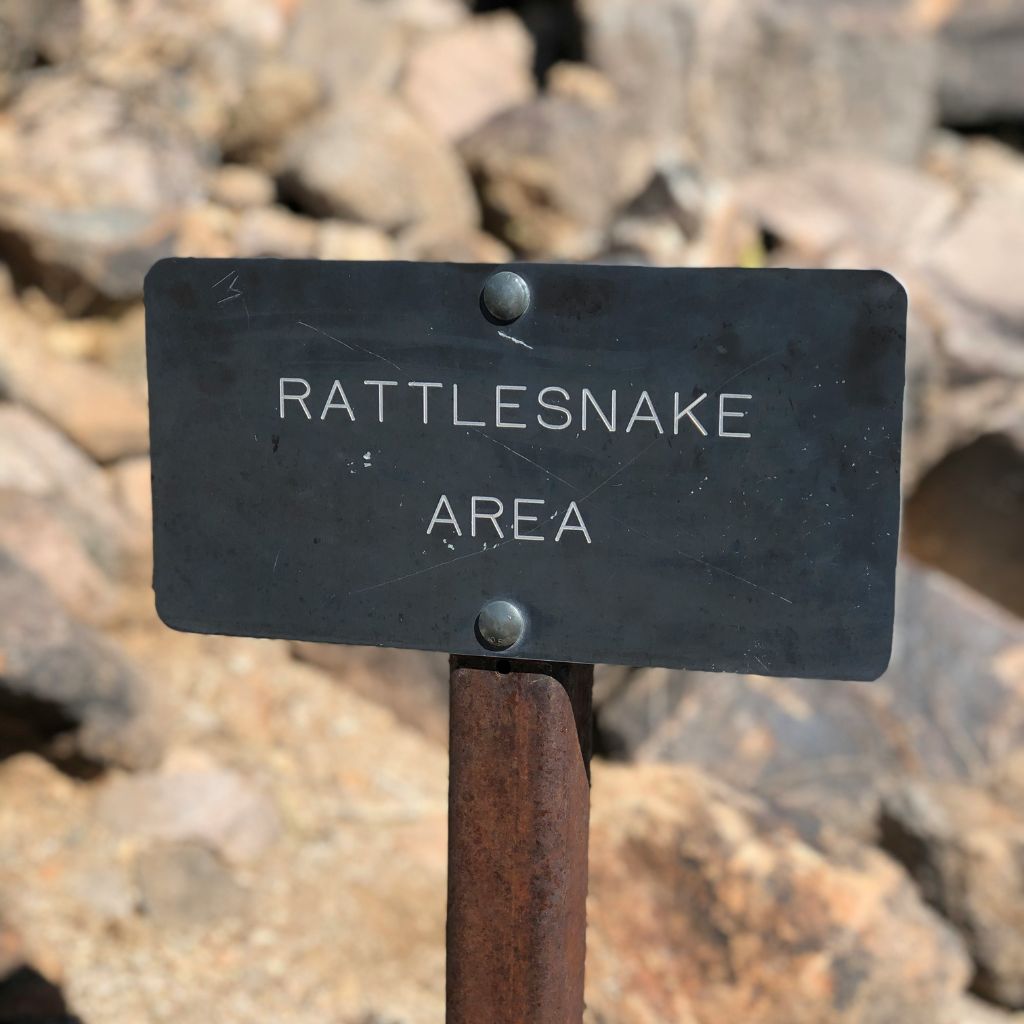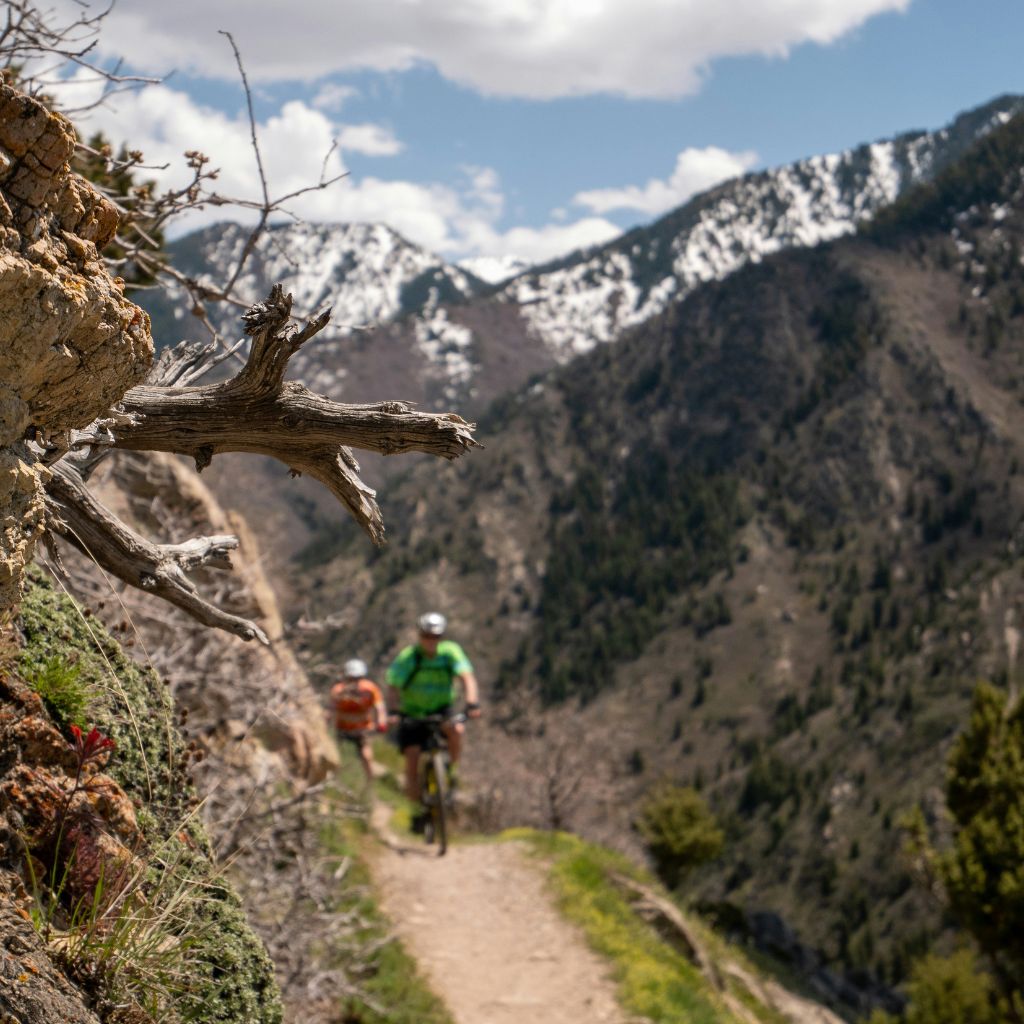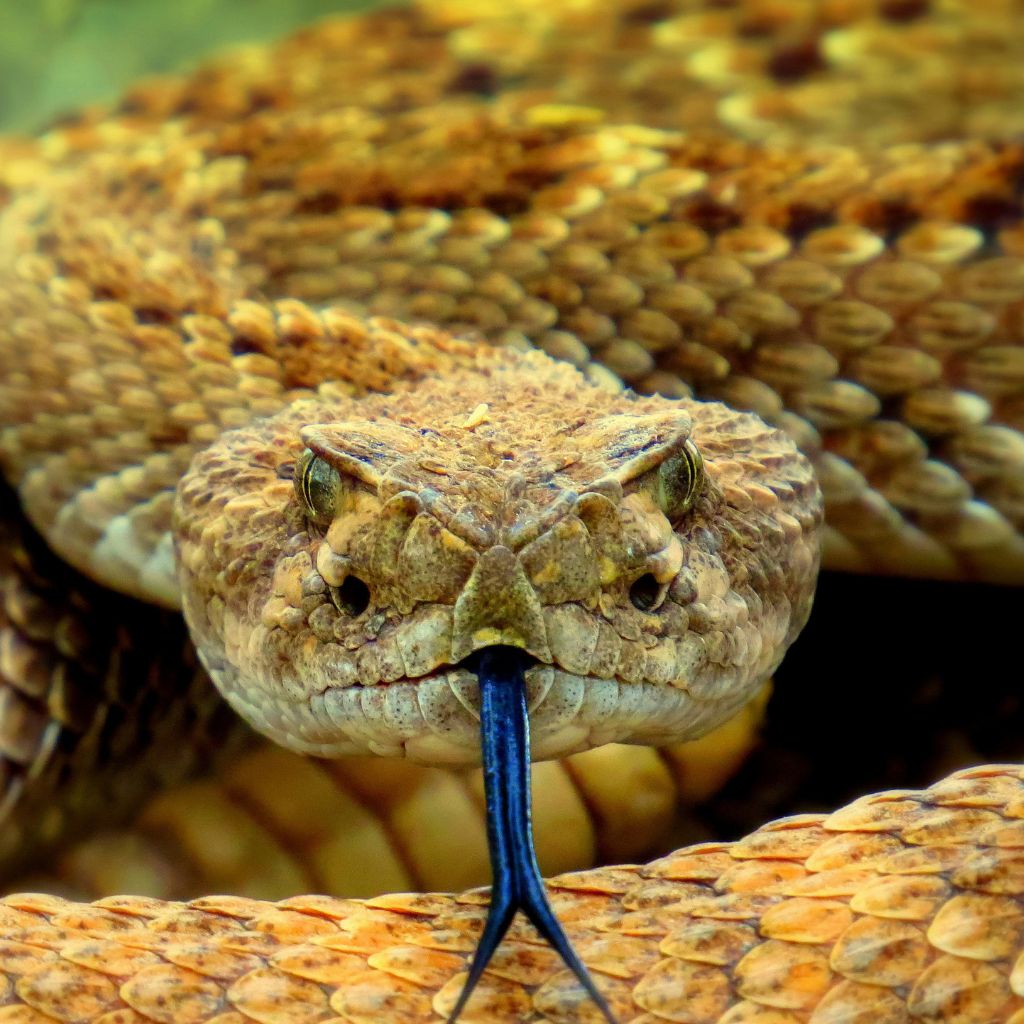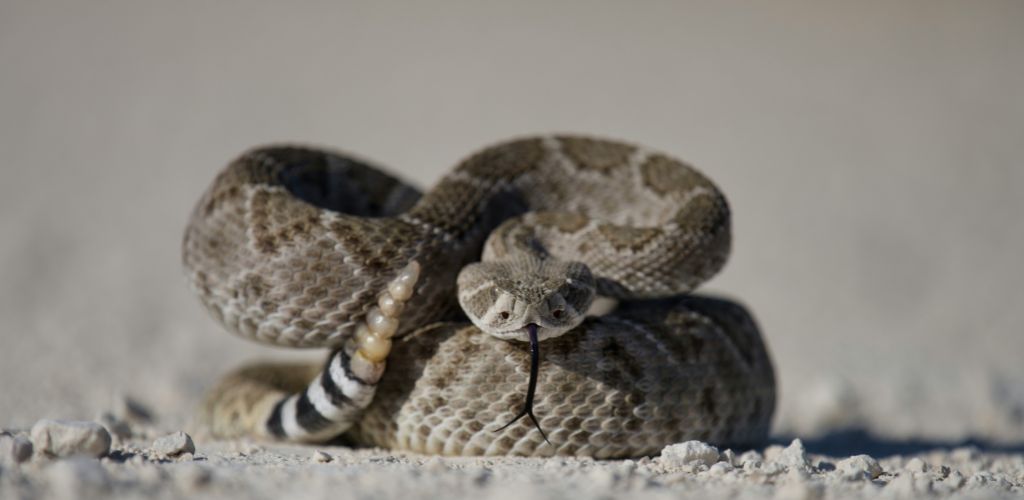Hey there fellow mountain biker! When it comes to avoiding rattlesnakes on the trails, the first step is understanding their behavior and habitat.
Understanding Rattlesnake Behavior and Habitat
Rattlesnakes, like most reptiles, are cold-blooded and depend on external heat sources to regulate their body temperature.
This means you’ll often find them basking on warm surfaces, such as rocks or sunlit paths, especially in the morning or late afternoon. They’re most active in warmer months, typically from late spring to early fall.
Knowing the type of terrain rattlesnakes prefer can also keep you safer.
They tend to favor dry, rocky areas with ample hiding spots, like logs, brush, and undergrowth. Trails with such features require extra vigilance.
Remember, though, that rattlesnakes don’t want to encounter us any more than we want to encounter them. They’ll usually only strike if they feel threatened or cornered.

Pre-Ride Preparation and Gear
Preparation is key to avoiding rattlesnakes. Before you head out, it’s wise to check local wildlife advisories for your intended route.
Some areas might have higher snake activity at certain times of the year. Also, consider your timing.
Avoid early morning and late afternoon rides during peak rattlesnake season, as this is when they are most likely to be sunning themselves on trails.
Gear-wise, long socks and protective leg coverings can offer an additional layer of safety. While they may not completely prevent a bite, they can reduce the severity.
Also, consider bringing a first aid kit equipped for snake bites – it’s better to have it and not need it than the other way around.

On-Trail Vigilance and Riding Practices
Once you’re on the trail, staying alert is your best defense. Keep your eyes peeled ahead of you, scanning the trail for snakes.
This can be challenging when navigating technical terrain, but it’s crucial. Rattlesnakes often blend into their surroundings, making them hard to spot until you’re quite close.
Listening is just as important as looking. The distinctive rattle is a warning sign you can’t ignore. If you hear it, stop immediately and locate the source of the sound.
Give the snake plenty of space to move away; most rattlesnake bites occur when people get too close or accidentally step on them.
Adapt your riding style too. Avoid plowing through thick brush or overgrown areas where visibility is low.
Stick to clear, well-used trails as much as possible. When approaching blind corners, slow down and keep an eye out for basking snakes.

Post-Encounter Protocol and First Aid
So, what if you do encounter a rattlesnake? First, stay calm. Most snakes will retreat if given space and time. Slowly back away and give the snake a wide berth. Do not attempt to move or provoke the snake in any way.
In the unlikely event of a bite, it’s crucial to know the first aid protocol.
Keep the affected area immobilized and lower than the heart. This slows the spread of venom. Get medical help immediately; a rattlesnake bite is a medical emergency.
While waiting for help, stay as calm and still as possible to reduce the spread of venom.
Remember, do not apply ice, tourniquets, or attempt to suck out the venom.
The bottom line…
Mountain biking in rattlesnake territory can be intimidating, but with the right knowledge and precautions, it shouldn’t keep you off the trails.
Understanding their behavior, preparing adequately, staying vigilant on the trail, and knowing what to do in an encounter will greatly reduce your risks and enhance your riding experience.
Stay safe and enjoy the ride! See you on the trail!

